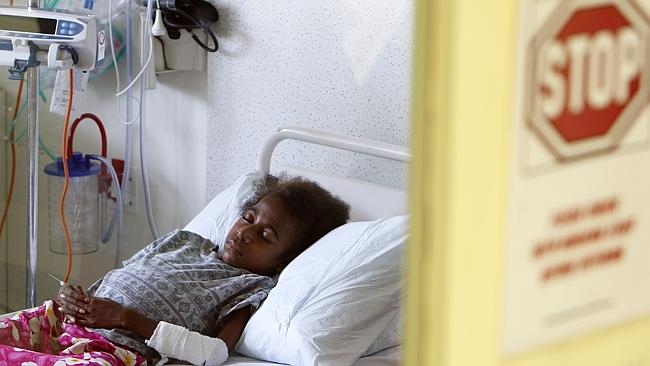
Fears Papua New Guinea’s tuberculosis health emergency could spill over the border into Australia have been realised following confirmation of the first Australian transmission of a highly drug-resistant form of the infection.
A Torres Strait Island woman who died in Cairns Base Hospital last month from multi-drug resistant tuberculosis (MDR-TB) is suspected to have caught the virulent bug during a visit to Saibai Island, which lies just eight kilometres south of the PNG mainland.
The case has punctured hopes that MDR-TB might not spread to Australia despite the very porous nature of the Australia-PNG border in the Torres Strait. Hundreds of people cross the border daily, trading goods and visiting relatives and friends.
Health experts warn that Australia needs to substantially increase its support for efforts to control the spread of MDR-TB in PNG, particularly the Western Province abutting Torres Strait, if it wants to prevent it getting a foothold on the Australian mainland.
The scale of the threat is significant.
It is estimated 680,000 people worldwide were infected with MDR-TB in 2012, and almost 60 per cent of tuberculosis cases occur in the Asia-Pacific.
Worryingly for Australia, the PNG Government has declared the country’s high incidence of TB and MDR-TB as a national health emergency, indicating that it will struggle to bring it under control without much greater international assistance.
In 2012 a strategic plan to control TB in Australia, developed by the National Tuberculosis Committee, called for increased engagement by Australia with countries in the region, particularly in the case of PNG’s Western Province.
Last year health journalist Tony Kirby, writing in the Medical Journal of Australia, warned that “well co-ordinated TB management programs and general health care provision for the people of Western Province must be urgently expanded to avoid increases in incidence of MDR-TB and [extensively drug-resistant] XDR-TB, and reduce the risk of more patients arriving in Australia”.
“Patients who receive inadequate treatment in poor nations such as PNG, and patients who are unknowingly infected, will inevitably reach the Torres Strait or Australia’s mainland,” Mr Kirby wrote.
Earlier this year a group of TB experts briefed federal parliamentarians on the urgent need for an increased and co-ordinated response to what they described as a tuberculosis crisis in the Asia-Pacific.
Burnet Institute Director Professor Brendan Crabb said Australia had a “crucial” role to play in the regional response to the disease.
“It is a major issue on our doorstep, with 58 per cent of global cases in the Asia-Pacific region – this is a threat to both our neighbours and ourselves,” Professor Crabb said.
The urgency of the problem has been highlighted by the humanitarian group Medicins Sans Frontieres [MSF], which has declared drug-resistant TB to be a “worldwide public health crisis”.
MSF said an assessment of efforts to control the epidemic in eight countries where TB was highly prevalent was far from reassuring.
It found that in the countries – Brazil, India, Kenya, Myanmar, Russian Federation, South Africa, Uzbekistan and Zimbabwe – the disease was flourishing because control measures were “dangerously out of step” with what had been proven to work, with MDR-TB diagnosed in up to 35 per cent of new tuberculosis patients.
According to the World Health Organisation, less than a third of patients with MDR-TB worldwide are diagnosed, and only one in five receive appropriate treatment.
It identified five “deadly gaps” in the response to TB: inadequate testing, lack of treatment, outdated models of care, little access to new drugs and “dire funding shortfalls”.
Combined, MSF Medical Epidemiologist Dr Petros Isaakidis said, these shortcomings had led to a “man-made disaster born out of years of neglect, and driven by a slow and piecemeal response”.
Adrian Rollins
Source: AMA
